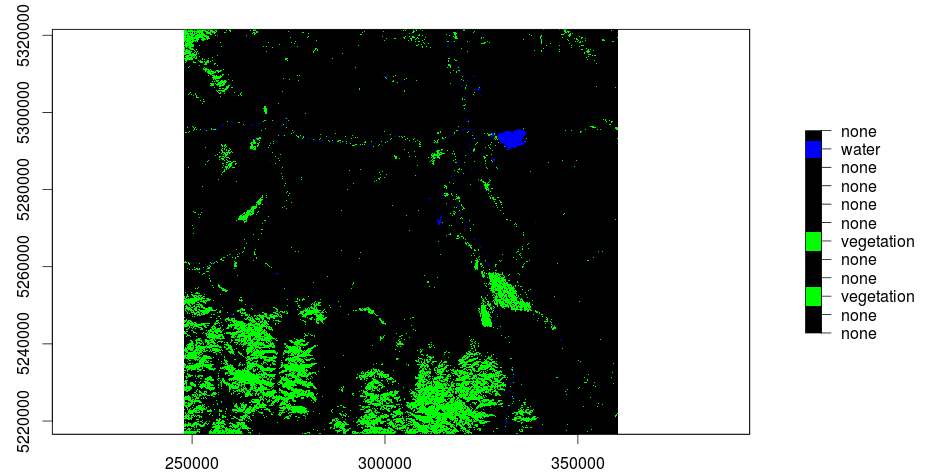Due to an upcoming presentation about “what is R” and “what can I do with R” in my company I was playing around with GUIs as they are a very important way to interact with users and R to present a simple calculator. This will lead hopefully to an understanding of syntax and concepts in R:
My short overview over GUI packages led me to the gWidgetstcltk package which seems to be powerful and also easy to include.
require(gWidgetstcltk) #use the gWidgetstcltk package from CRAN
Now we will setup the GUI as a frame and an corresponding environment to store the variables:
env <- environment() #we will store our variables in this one
win <- gwindow(title = "Calculator", width = 300, height = 300)
[/sourcecode]
lets get a structure for the buttons and the lines for input and results:
[sourcecode language="R"]
grp.variables <- ggroup(container = win) #this will be the "area" where we will put our input lines
grp.buttons <- ggroup(container = win, horizontal = TRUE) #a container with horizontal order for included elements
grp.buttons2 <- ggroup(container = grp.buttons, horizontal = FALSE) #we will group three containers in the "grp.buttons" container. each one with vertical order of elements to host the buttons
grp.buttons3 <- ggroup(container = grp.buttons, horizontal = FALSE) #see above
grp.buttons4 <- ggroup(container = grp.buttons, horizontal = FALSE) #see above
grp.results <- ggroup(container = win, horizontal = TRUE) #a last group to contain the lines of result with an horizontal order
[/sourcecode]
Now we need some input fields for the variables x and y:
[sourcecode language="R"]
env$x<-gedit("x", cont = grp.variables)
env$y<-gedit("y", cont = grp.variables)
[/sourcecode]
Due to the line-wise interpretation we need the functions which are associated with the later upcoming buttons beforehand!
[sourcecode language="R"]
handler.plus<-function(h) { #this is the function for addition of two elements
x1<-as.numeric(svalue(env$x)) #convert the input in the input line env$x to a numeric value
x2<-as.numeric(svalue(env$y)) #see above
svalue(env$result)<-x1+x2 #this is the result
} #end of the function with the title "handler.plus"
[/sourcecode]
Now we can go ahead and construct the other functions as well. the only “problem” is the division of two numbers x and y:
[sourcecode language="R"]
handler.div<-function(h) {
x1<-as.numeric(svalue(env$x))
x2<-as.numeric(svalue(env$y))
if (x2==0) #now we will test whether the denominator equals zero
gmessage("!denominator can´t be zero!") #show a message if this is the case
else
svalue(env$result)<-x1/x2 #else we don't have a poblem!
}
[/sourcecode]
And a “close” button function:
[sourcecode language="R"]
handler_exit<-function(h,...) {
dispose(win)
}
[/sourcecode]
The last step is the organization of the buttons and output lines:
[sourcecode language="R"]
gbutton("+", cont=grp.buttons2, handler = handler.plus) #two buttons in each container except the exit button
gbutton("-", cont=grp.buttons2, handler = handler.minus)
gbutton("*", cont=grp.buttons3, handler = handler.times)
gbutton("/", cont=grp.buttons3, handler = handler.div)
gbutton("EXIT", cont=grp.buttons4, handler = handler_exit) #this will be located in its own group
env$str<-glabel("your result is", cont = grp.results, expand=TRUE) #and the string indicating the result
env$result<-glabel("NaN", cont = grp.results, expand=TRUE) #we will show the inital result with a "NaN" but this will be updated as a function by a button is called
[/sourcecode]
And now we are ready:
[caption id="attachment_3007" align="aligncenter" width="300"] simple calculator in R[/caption]
simple calculator in R[/caption]

